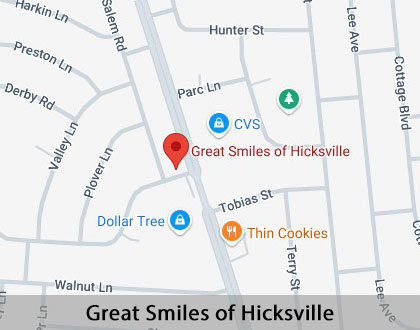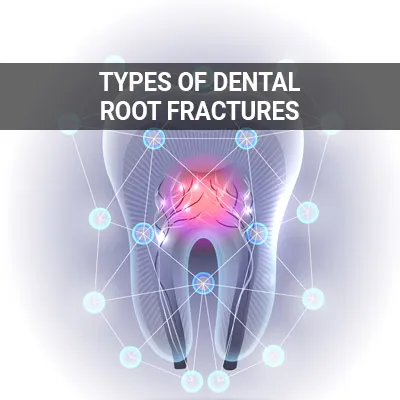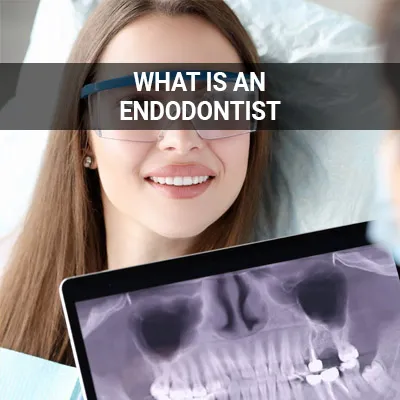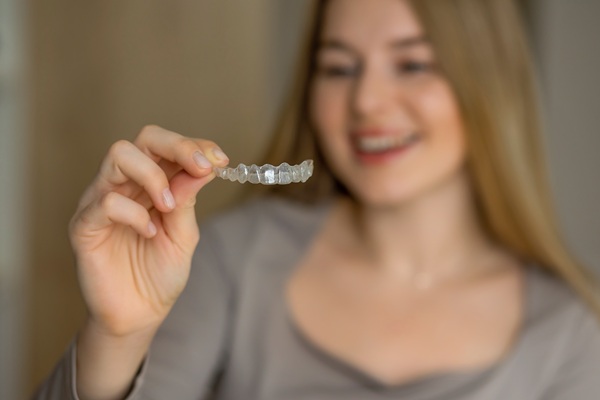Can a Cracked Tooth be Saved with a Root Canal and Crown Hicksville, NY
A cracked tooth is not something to take lightly. They are painful and often get worse when left untreated. Early diagnosis and treatment are vital to save the tooth and relieve any associated discomfort. Even if the crack has extended into the tooth's pulp, you can save it with a root canal and crown. The treatment and its ability to save the tooth will depend on the severity of the crack.
Root canals and crowns to repair a cracked tooth are available at Great Smiles of Hicksville in Hicksville and the surrounding area. Our knowledgeable staff will guide you through the treatment options and discuss what makes the most sense for your dental concerns. Call us at (516) 806-5067 to schedule an appointment.
Symptoms of a Cracked Tooth
A cracked tooth can come in many forms — ranging from cracks on just the outer surface of the tooth enamel to fractures that extend into the root. These cracks are often too small to be noticed with the naked eye, and even X-rays may not be sufficient. Our dentist may use other methods such as dental dye or a magnifying lens to diagnose a cracked tooth.
The symptoms can vary depending on the type of crack and its severity. However, several warning signs reveal a cracked tooth, including:
- A small bump on the gum line, indicating an infection
- Inconsistent pain
- Increased sensitivity to hot and cold foods and liquids
- Tooth pain when biting or chewing
- Unusual discomfort around the teeth and gums
These symptoms can also indicate another oral health issue. Our dentist will do a thorough exam to rule out any other conditions. Once diagnosed, we will discuss treatment options, including crown and root canal procedures, as necessary.
“A cracked tooth can come in many forms — ranging from cracks on just the outer surface of the tooth enamel to fractures that extend into the root.”
The Severity of Cracked Tooth Syndrome
Cracked tooth syndrome (CTS) is when a patient has a tooth with a crack that is challenging to identify. It shows up most often on molars. The symptoms of CTS include pain and discomfort when biting into food or increased sensitivity to hot and cold. This pain comes and goes.
Many oral health conditions can lead to CTS. Common causes include grinding or clenching teeth, teeth with large fillings, or teeth that have had a root canal. Many people experience symptoms for months since CTS is so tough to diagnose. People who have experienced cracked teeth in the past are more susceptible to CTS in the future.
“Cracked tooth syndrome (CTS) is when a patient has a tooth with a crack that is challenging to identify.”
When a Cracked Tooth Can Be Saved
When treating a cracked tooth, the dentist has many factors to consider. The location of the crack and the type of crack will determine the right treatment option. It is possible to treat a biting surface fracture with a crown, fitting it over the remains of the tooth and making it stronger.
A crack that goes below the gum line may need more extensive treatment like a root canal. A root canal is when the dentist removes the infected or inflamed part of the pulp, cleans the rest of the space, then fills and seals it with a special material. A crown is then fitted on the tooth to provide extra protection.
Thanks to advancements in dental techniques, a root canal is a procedure relatively free of discomfort. As long as the patient follows proper oral health care, most teeth with a root canal can last for decades. Our staff will walk the patient through all the treatment options to help them feel comfortable with the procedure.
Sometimes a cracked tooth can be saved using methods other than a root canal or crown. For example, it may be possible to fill or bond the tooth if the crack removed a small piece of tooth enamel. A veneer would offer another option if only the front part of the tooth got cracked. Patients should be sure to talk about all of their treatment options with our dentist during their assessment appointment.
“Thanks to advancements in dental techniques, a root canal is a procedure relatively free from discomfort.”
Check out what others are saying about our dental services on Yelp: Can a Cracked Tooth be Saved with a Root Canal and Crown in Hicksville, NY
When a Tooth Is Beyond Repair
When a tooth gets cracked, our staff will do all they can to save it. Sometimes, a crown or root canal is not enough to preserve a tooth, and extraction becomes necessary to prevent infection and further decay. Fractures can also happen below the gum line, which can be harder to fix without removing the tooth.
If possible, the patient should try to save the tooth instead of having it removed. However, if tooth removal is necessary, dental implants can effectively replace the missing tooth. Patients will want to discuss any alternative options with our dentist when assessed for a root canal treatment.
“When a tooth gets cracked, our staff will do all they can to save it.”
Questions Answered on This Page
Q. How can I make sure my repaired cracked tooth stays saved?
Q. What are the symptoms of a cracked tooth?
Q. What is cracked tooth syndrome?
Q. How can you save a tooth with a root canal?
Q. What are the options when a tooth cannot be repaired?
People Also Ask
Q. Is increased sensitivity to temperature a sign that endodontic surgery is necessary?
Q. Do I need a root canal procedure?
Q. What is the difference between endodontists and dentists?
Q. Are pain and tenderness when touching the teeth or chewing a sign of a problem?
Aftercare for a Repaired Cracked Tooth
Unlike in broken bones, the fractures in a cracked tooth will not heal. Some cracks may even continue to grow until they separate, leading to total tooth loss. Crowns protect the treated teeth, but even they are not foolproof. Fortunately, endodontic retreatment is possible if any treated teeth heal improperly or become reinfected due to external factors.
Knowing how to care for a repaired cracked tooth is arguably just as important as having it treated in the first place. With improper aftercare, patients may inadvertently worsen the pain and have the crack spread. Some pain or discomfort may follow most cracked tooth treatment options; however, this should be easily managed with painkillers (either prescribed or over-the-counter). Great Smiles of Hicksville also provides patients with post-treatment instructions to ensure the best results.
“Knowing how to care for a repaired cracked tooth is arguably just as important as having it treated in the first place.”
Frequently Asked Questions
Q. How do I know if I have a cracked tooth?
A. A cracked tooth mimics the symptoms of many other dental issues. However, you may experience discomfort when you bite down or be sensitive to hot and cold foods. Do not ignore these symptoms. The sooner a cracked tooth is diagnosed and treated, the better.
Q. What can I do to keep my teeth from cracking?
A. It is difficult to avoid cracked teeth; still, you can do some things to reduce your chances. Do not chew on hard objects like ice or pens, look into a mouthguard if you clench or grind your teeth, and wear a mouthguard while playing contact sports.
Q. Could I have cracked tooth syndrome (CTS)?
A. Cracked tooth syndrome is when the crack on the tooth is not detected on an X-ray or resides under the gums. Since the crack is hard to see, many people may suffer for months before seeking help. Our dentist will utilize many different methods to help diagnose CTS.
Q. Why does a cracked tooth hurt?
A. Inside the tooth is a soft connective tissue called the pulp. This pulp contains cells, blood vessels, and nerves. Pulp may become irritated when the outer hard tissues of the tooth are cracked and chewing causes movement of the broken pieces.
Dental Terminology
Helpful Related Links
- American Dental Association (ADA). Glossary of Dental Clinical Terms. 2025
- American Academy of Cosmetic Dentistry® (AACD). Home Page. 2025
- WebMD. WebMD’s Oral Care Guide. 2025
About our business, license, and website security
- Great Smiles of Hicksville was established in 2012.
- We accept the following payment methods: American Express, Cash, Check, Discover, MasterCard, and Visa
- We serve patients from the following counties: Nassau County
- We serve patients from the following cities: Hicksville, Levittown, Plainview, Jericho, Farmingdale, East Meadow, Westbury, Massapequa, Wantagh and Mineola
- NY (License #51241). View License Information and Specifics
- National Provider Identifier Database (1093724528). View NPI Registry Information
- Healthgrades. View Background Information and Reviews
- Norton Safe Web. View Details
- Trend Micro Site Safety Center. View Details
Back to top of Can a Cracked Tooth be Saved with a Root Canal and Crown
QR code for Can a Cracked Tooth be Saved with a Root Canal and Crown










